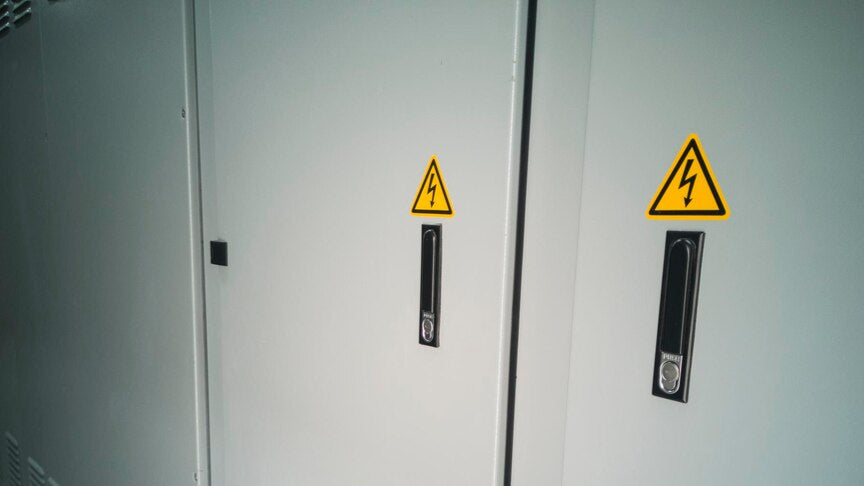Introduction
Feeder conductors are the lifeline of commercial electrical systems, carrying power from service equipment to distribution panels across a facility. The NEC Article 215.2 sets the rules for sizing feeders correctly — ensuring they’re large enough to handle demand, minimize voltage drop, and meet safety standards.
For contractors, mistakes in feeder sizing are one of the top reasons projects get flagged during inspections. In this guide, we’ll break down NEC 215.2 requirements, explain the logic behind load and voltage drop calculations, and share field-level tips for passing inspection the first time.
If you haven’t already, review our full guide on NEC Services and Feeders for broader context before diving into this specific code section.
NEC 215.2 Overview
NEC 215.2(A)(1) – Feeder Sizing by Load
-
Feeder conductors must have an ampacity not less than the calculated load served.
-
Load is determined per Article 220, which covers general load calculations for lighting, receptacles, HVAC, and equipment.
-
Where continuous loads are supplied, feeders must be sized at 125% of the continuous load plus the non-continuous load.
NEC 215.2(A)(3) – Minimum Size
-
Feeders must be large enough to allow safe overcurrent protection.
-
For example, conductors must match the OCPD rating per NEC 240.4.
NEC 215.2(A)(4) – Voltage Drop Recommendation
-
Not an enforceable requirement but a FPN (Fine Print Note) / Informational Note strongly recommends limiting voltage drop to:
-
3% on any feeder, and
-
5% total (feeder + branch circuit combined).
-
-
Contractors often overlook this, but inspectors use it as a benchmark of quality workmanship.
For additional context on how feeders relate to overall system design, revisit our article on Services and Feeders.
Load Calculation Basics (Article 220 Reference)
-
General Lighting Load: Based on building occupancy type (NEC 220.12).
-
Receptacle Loads: Calculated at not less than 180 VA per receptacle (NEC 220.14).
-
HVAC and Motors: Largest motor load plus 25% (NEC 430.24).
-
Demand Factors: Apply demand factors where allowed to avoid oversizing.
👉 Correct load calculations are the foundation of feeder sizing and compliance with NEC 215.2.
Voltage Drop in Practice
Voltage drop is a real-world performance issue. Too much drop results in:
-
Dimming lights
-
Reduced motor torque
-
Heat buildup in equipment
-
Energy waste
Practical Example:
-
A 200-amp feeder runs 250 feet to a subpanel.
-
Using aluminum conductors may result in excessive drop unless upsized.
-
Copper might cost more upfront but avoids long-term headaches.
Contractors should calculate voltage drop using NEC Chapter 9 tables or software tools, then upsize feeders as needed.
For more feeder-specific considerations, check our guide on NEC Services and Feeders.
Common Field Mistakes with NEC 215.2
-
Ignoring continuous load adjustments → undersized feeders.
-
Failing to consider future expansion → feeders maxed out too soon.
-
Misusing demand factors → oversimplifying calculations.
-
Skipping voltage drop analysis → failed performance under load.
-
Mismatched OCPD ratings → inspectors red-tagging installations.
Why Labeling Matters for Feeders
NEC 110.22 and 215.5 require that feeder disconnects and panels be clearly identified. In large commercial jobs, improper labeling can be as costly as improper sizing.
✅ At Print Pro, we provide custom NEC-compliant labels for feeder panels, disconnects, and distribution equipment, ensuring projects pass inspection without delays.
Pro Tips for Contractors
-
Always size feeders at 125% of continuous load — don’t cut corners.
-
Run voltage drop calculations for long runs, even when not required.
-
Upsize conductors when running aluminum, especially for motors.
-
Factor in future load growth when designing feeders.
-
Pre-label feeder disconnects and panels to save time during final inspection.
Conclusion
NEC 215.2 ensures feeder conductors are properly sized to handle demand and protect against hazards. By applying accurate load calculations, considering voltage drop, and using NEC-compliant labels, contractors can save time, avoid red tags, and deliver safer, more efficient installations.
To see how feeders fit into the bigger NEC picture, don’t miss our detailed guide on Services and Feeders.
👉 Ready to pass inspections with ease? Order feeder panel and disconnect labels today at PrintProAZ.com.


